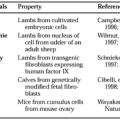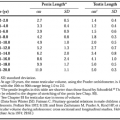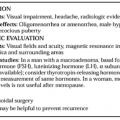ECTOPIC CALCIFICATION
Many conditions are associated with extraskeletal deposition of calcium and phosphate.4 In some, the pathogenesis is an elevation in the circulating calcium-phosphate product (i.e., meta-static calcification).91 In others, the precise mechanism is unknown, and either amorphous calcium (dystrophic calcification) or true bone is deposited.91 Metastatic calcification occurs with hypercalcemia of any cause (e.g., milk-alkali syndrome, hypervitaminosis D, tumoral calcinosis, sarcoidosis, hyperpara-thyroidism, and renal osteodystrophy). Typically, deposits occur in the kidneys, lungs, media of large arteries, fundus of the stomach, and periarticular regions. Hyperphosphatemia is also associated with ectopic calcification (e.g., hypoparathyroidism and pseudohypoparathyroidism), renal insufficiency, and massive cell destruction with liberation of inorganic phosphate (e.g., chemotherapy for leukemia). Dystrophic calcification, in which the calcium-phosphate product is normal, occurs in necrotic tissue in the calcinosis universalis and calcinosis circumscripta that accompany scleroderma, dermatomyositis, systemic lupus erythematosus, trauma, and metastatic malignancy, and as a primary cutaneous disease.4 Fasciitis is associated with
ectopic bone formation (e.g., myositis ossificans progressiva), although other soft tissues can ossify, as in neurologic injury, burns, and trauma. Progressive osseous heteroplasia, an autosomal dominant disorder featuring extraskeletal ossification in subcutaneous and deep tissues, is caused by mutation in the GNASI gene that encodes the GSa stimulatory protein.91a
ectopic bone formation (e.g., myositis ossificans progressiva), although other soft tissues can ossify, as in neurologic injury, burns, and trauma. Progressive osseous heteroplasia, an autosomal dominant disorder featuring extraskeletal ossification in subcutaneous and deep tissues, is caused by mutation in the GNASI gene that encodes the GSa stimulatory protein.91a
Stay updated, free articles. Join our Telegram channel

Full access? Get Clinical Tree






